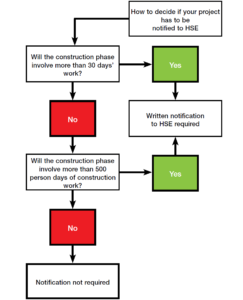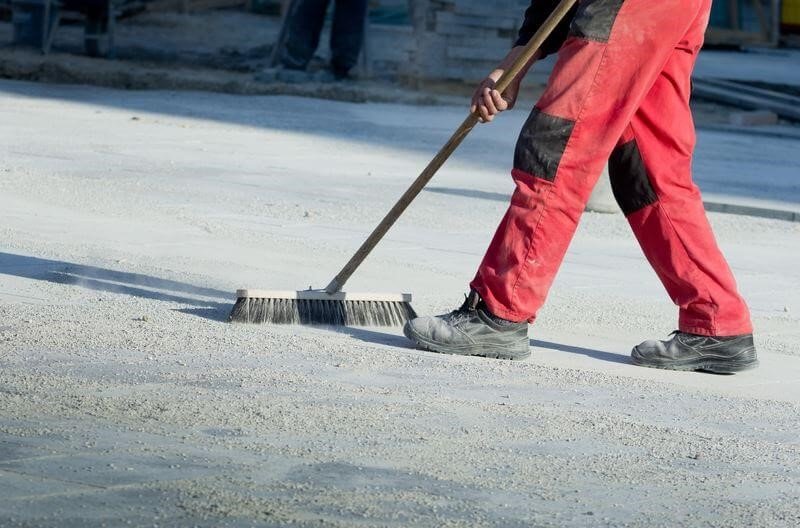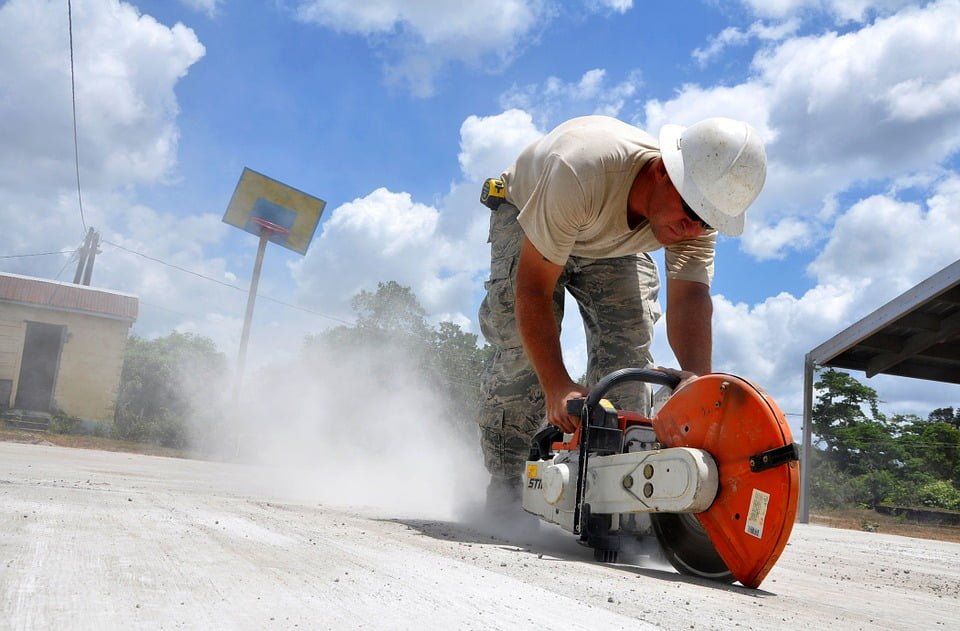The key to achieving healthy and safe working conditions is to ensure that health and safety issues are planned, organised, controlled, monitored and reviewed.
Everyone controlling site work has health and safety responsibilities. Checking that working conditions are healthy and safe before work begins and ensuring that the proposed work is not going to put others at risk requires planning and organisation.
This applies equally to a firm running and managing a small job, or to a subcontractor working at a large site controlled by someone else. Planning has to consider changes to the site as it develops – from welfare arrangements at the set up, through to snagging work and the dismantling of site huts and hoardings at the end of the contract. The basic requirements apply to all jobs.
At the end you will be able to know how to prepare the construction site as per the following :

Construction Safety Management Step-1: Preparing for work
Planning the work
Gathering as much health and safety information about the project and the proposed site before work begins is important. Information available at tendering should be used so that allowance is made for the time and resources required to deal with particular problems. Sources of information include:
- The client;
- The design team;

. - Contract documents;
- The main contractors on the site;
- Specialist contractors and consultants;
- Trade and contractor organisations;
- Equipment and material suppliers; and
- HSE guidance and International Standards.
Find out about the history of the site and its surroundings. See if there are any unusual features which might affect the work, or how the work will affect others. Pay particular attention to:
- Asbestos or other contaminants;
- Overhead power lines and underground services;
- Unusual ground conditions;
- Public rights of way across the site;
- Nearby schools, footpaths, roads or railways; and
- Other activities going on at the site.
When estimating costs and preparing the programe, consider any particular health and safety hazards associated with the work. Make sure suitable allowances have been made in the price. The job will run more smoothly, efficiently and profitably if hazards have been predicted, planned for and controlled from the outset. Having to stop or reschedule work to deal with emergencies wastes time and money.
When materials are bought, or equipment is hired, the supplier has a duty to provide certain health and safety information. Make sure this is obtained and read. It may be necessary to:
- Consider using a specialist who is familiar with the necessary precautions;
- Carry out an assessment of the health risks arising from substances or equipment; and
- Act on your findings, eg by eliminating harmful substances where possible, or by using a less hazardous method of work or providing training on the safe use of the material or equipment.
When programs are prepared, consider whether there are any operations that will affect the health or safety of others working at the site. For example:
- Think about access to the workplace – which trades will need to go where and when? Arrange the programe to make sure everyone who needs to use a scaffold or other means of access has time to do so. Plan to make sure the access will be safe and suitable for their use;
- Timber treatment or site radiography usually has to be done when no one else is on site. The site may have to be left vacant for a few days. Where a specialist contractor is used, check the requirements with them and program the work well in advance.
Discuss proposed working methods with subcontractors before letting contracts. Find out how they are going to work, what equipment and facilities they are expecting to be provided, and the equipment they will bring to the site. For effective site maintenance and cleanup, consider exploring options like Broce brooms and sweepers to keep your construction site tidy and efficient. Identify any health or safety risks that their operations may create for others working at the site and agree control measures. Obtaining health and safety risk assessments and method statements will help.
Decide what plant will be required and check that it will be suitable.
Plan material deliveries and consider storage needs.
Plan your emergency and rescue procedures. Decide what equipment will be required and who is trained to operate it.
Organizing the work
Decide who will supervise the work – check that they are adequately trained and experienced .
.
When taking on workers, ask about the training they have received and ask to see certificates of training achievement. Get them to demonstrate their knowledge or to show examples of safe working practice before setting them to work.
Make sure that firms coming onto site provide adequate supervision for their workers. Agree what training they will have received or will be provided at the site.
See that work methods and safety precautions agreed before work is started are put into practice. Make sure everyone understands how work is to be done and is aware of relevant method statements before work starts.
Find out if any of the work will be further subcontracted. Make sure that people working for subcontractors also get the information they require and provide training, supervision etc as needed.
Notifying the site to HSE
HSE should be notified in writing before construction starts (see Figure 1) if the work is expected to either:
- Last longer than 30 days; or
- Involve more than 500 person days of construction work.
The notification should be sent to the HSE office nearest to the proposed site. You can obtain this information from HSE’s Infoline
A form can be used for notification. Forms are available from HSE offices. It is not essential that this form is used for notification, but the information required on Form must be provided in writing to HSE. A copy of the notification details should be displayed at a place on site where it can be easily read.
The work, notification of the project will be the responsibility of the planning supervisor . The planning supervisor should update the information as it becomes available (eg when the principal contractor is appointed).

Figure1: notification requirement
Download your Project Management Templates
Project Managers especially in the construction industry often have one problem in common. They and a large part of their team are hired after a contract is signed.
To secure the contract promises have been made by the contractor that now must be fulfilled. Consequently, there is little time now to write a comprehensive project plan.
A well-thought-out, complete project plan, however, is a prerequisite for the successful implementation of a project.
The template package includes:
- Project Charter Template
- Project Management Plan Template
- Scope Management Plan Template
- Requirements Management Plan Template
- Schedule Management Plan Template
- Cost Management Plan Template
- Quality Management Plan Template
- Process Improvement Plan Template
- Resource Management Plan Template
- Communications Management Plan Template
- Risk Management Plan Template
- Procurement Management Plan Template
- Stakeholder Management Plan Template
- Financial Management Plan Template
- Post Project Review Template
- WBS Dictionary Template
- Milestone List
- Gantt Chart
- Activity Cost Estimation Template
- Budget Template
- Feasibility Estimation Template
- NCR, Testing and Inspection Registers
- RACI Chart Template
- Daily and Monthly Report Templates
- Risk Register Template
- Vendor Evaluation Template
- Request for Quotation Template
- Comparison Sheet Template
- Payment Application Template
All documents are created in MS Word or Excel and are editable. All documents can also be opened in Open Office / LibreOffice.
Receive your download link. Consequently, this is a digital product, not a physical product that is shipped to your address.






